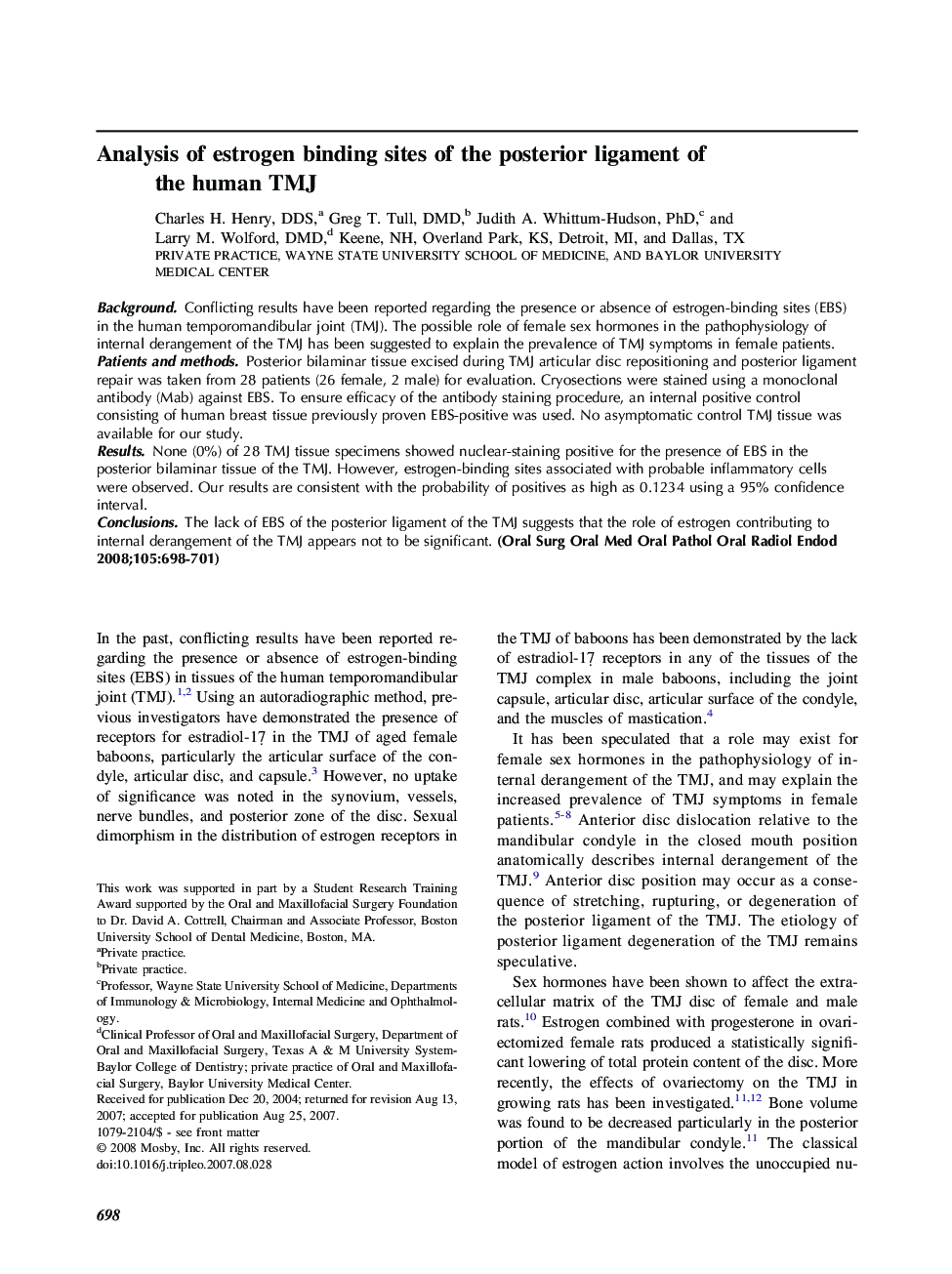| Article ID | Journal | Published Year | Pages | File Type |
|---|---|---|---|---|
| 3168656 | Oral Surgery, Oral Medicine, Oral Pathology, Oral Radiology, and Endodontology | 2008 | 4 Pages |
BackgroundConflicting results have been reported regarding the presence or absence of estrogen-binding sites (EBS) in the human temporomandibular joint (TMJ). The possible role of female sex hormones in the pathophysiology of internal derangement of the TMJ has been suggested to explain the prevalence of TMJ symptoms in female patients.Patients and methodsPosterior bilaminar tissue excised during TMJ articular disc repositioning and posterior ligament repair was taken from 28 patients (26 female, 2 male) for evaluation. Cryosections were stained using a monoclonal antibody (Mab) against EBS. To ensure efficacy of the antibody staining procedure, an internal positive control consisting of human breast tissue previously proven EBS-positive was used. No asymptomatic control TMJ tissue was available for our study.ResultsNone (0%) of 28 TMJ tissue specimens showed nuclear-staining positive for the presence of EBS in the posterior bilaminar tissue of the TMJ. However, estrogen-binding sites associated with probable inflammatory cells were observed. Our results are consistent with the probability of positives as high as 0.1234 using a 95% confidence interval.ConclusionsThe lack of EBS of the posterior ligament of the TMJ suggests that the role of estrogen contributing to internal derangement of the TMJ appears not to be significant.
